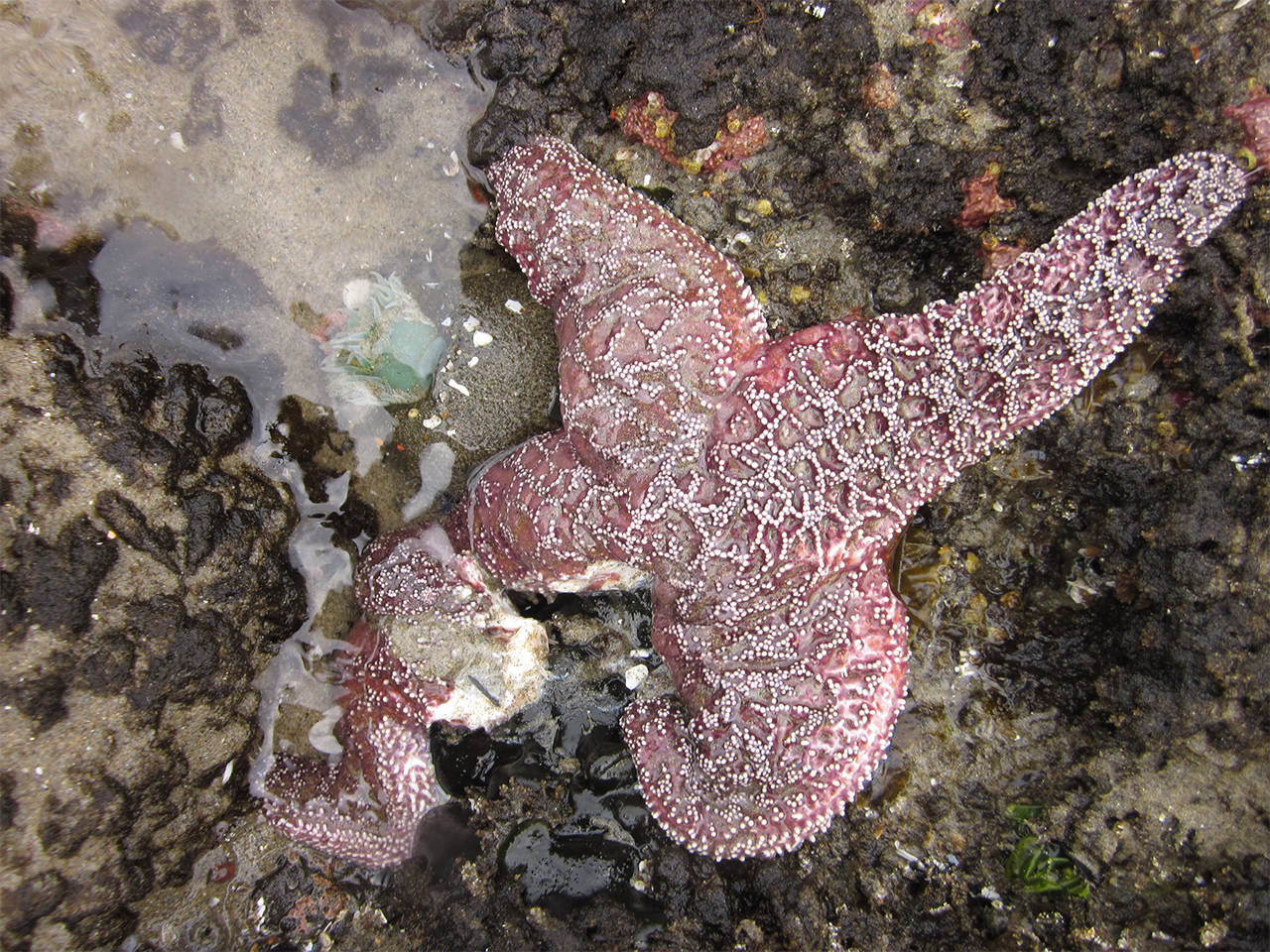Slow and steady wins the race — especially in sea star restoration. Following a devastating loss of sea star life from Alaska to Mexico due to wasting disease in 2013, the population is gently inching its way back upward.
“The pattern we observed over the past six years at Indian Island [in East Sound] suggests a viral disease to which the host — in this case, ochre stars — have been acquiring immunity. … Subsequent outbreaks were smaller and on the whole, less deadly,” Kwiaht Director Russel Barsh said, adding that the largest outbreak was akin to the 1917 influenza epidemic that killed 670,000 Americans. “Some [sea stars] get sick each summer, and some will die, but not as many, and on the whole the population will survive.”
According to SeaDoc Society Science Director Joe Gaydos, there were nearly 30 species of sea stars in the Salish Sea prior to the 2013 epidemic; about 20 of those species were affected. Gaydos explained that the disease struck two species with which people are most familiar, the five-point ochre star found at low tide and the large, deepwater sunflower star.
“Both experienced extensive mortality, but the early data suggest that the intertidal ochre star is recovering, and the outbreak may have genetically selected for resistant animals,” Gaydos said. “In a recent paper we showed that the sunflower stars have virtually disappeared from Alaska to Mexico with no signs of recovery.”
SeaDoc Society is an Orcas-based marine wildlife research division of U.C. Davis.
Barsh noted that the predators of the ochre stars, like the Dawson’s sun star, also were affected by the outbreak – even harder than the ochre stars.
“This is consistent with ecological theory: predators depend on there being a lot of prey,” Barsh said. “If prey numbers decline, predator numbers decline faster.”
Ochre stars, however, have not returned to their pre-2013 numbers, according to both Barsh and Gaydos.
According to Barsh, Indian Island has about half of the ochre sea star population it had prior to the epidemic. The number of dead ochres peaked in 2014, when 43 percent of the animals found on the beach were infected, he said.
“I think people are seeing them more and more often, which makes me hopeful that we will see full recovery,” Gaydos said. He added that scientists are still finding deceased animals, so “we’re not out of the barn yet.”
A species of sea star that appears to be thriving, according to Gaydos, is the leather star. He said it is likely because they have less competition from the sunflower stars these days. Instead of seeing many sunflower stars when scuba diving, he explained, divers are much more likely to encounter the leather star.
An important predator, Gaydos explained, the sunflower star’s population has disappeared, giving way to an increase in red and green urchins. That urchin growth plus increased water temperatures has been hard on kelp, he said.
“Combined with increased water temperatures, the increase in urchins have been very hard on kelp. In fact the kelp has been hit so hard in some places like California that scientists are considering culling urchins to help bring the kelp back,” Gaydos said. “So, losing just one species (the sunflower star) can have large-scale ecosystem consequences.”
With rising ocean temperatures due to climate change, both men expressed concern that massive die-offs of marine animals could reoccur in the future.
“We showed [in a recent study] that increases in ocean temperature was associated with mortality. Our thinking was that increased water temperature likely decreased the star’s ability to fight off disease,” Gaydos said. “We are expecting ocean temperatures to rise, so this could make more animals susceptible to disease and could prevent recovery of some species like the sunflower star. … People don’t think a lot about disease as a driver of ecosystem change, but it is, and Drew Harvell’s new book ‘Ocean Outbreak’ gives some great examples of how that works and why we might expect to see more disease outbreaks as the climate changes.”
The ocean is full of pathogens, viruses and fungi, Barsh said. Humans just haven’t been paying attention to marine wildlife epidemics before this one. He added that it is plausible that pollution and warming seas are weakening the animals’ immune systems.
“People should be conscious of the possibility that pollution is compromising the immune systems of marine animals,” Barsh said. “It’s a very big reason for us to reduce our use and disposal of products that are toxic to wildlife.”



